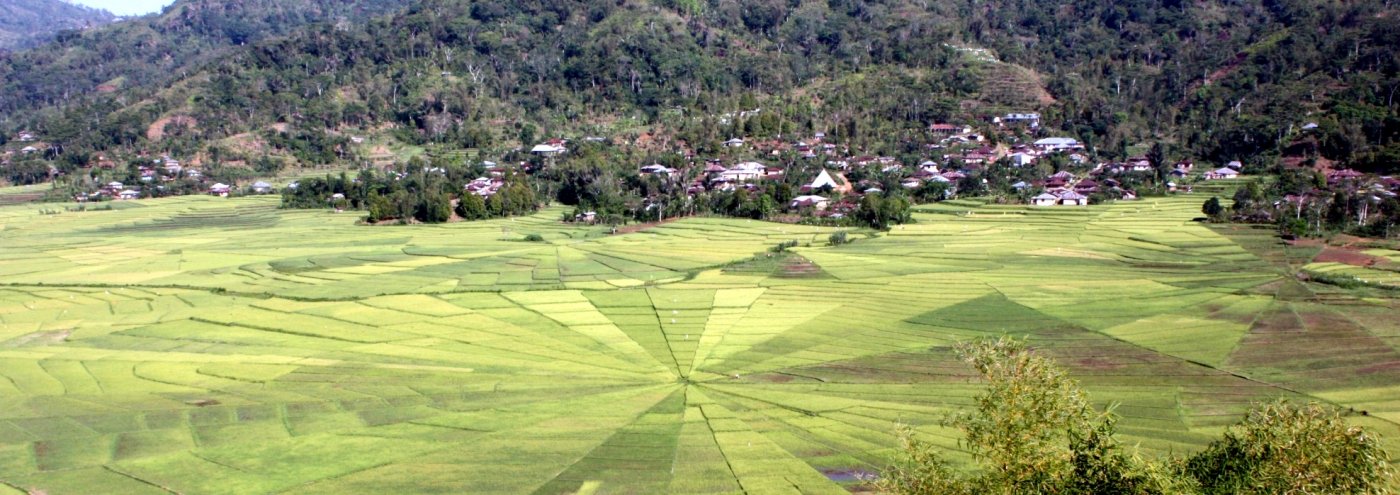Komodo National Park Dive sites
Komodo Dive Sites

Batu Bolong
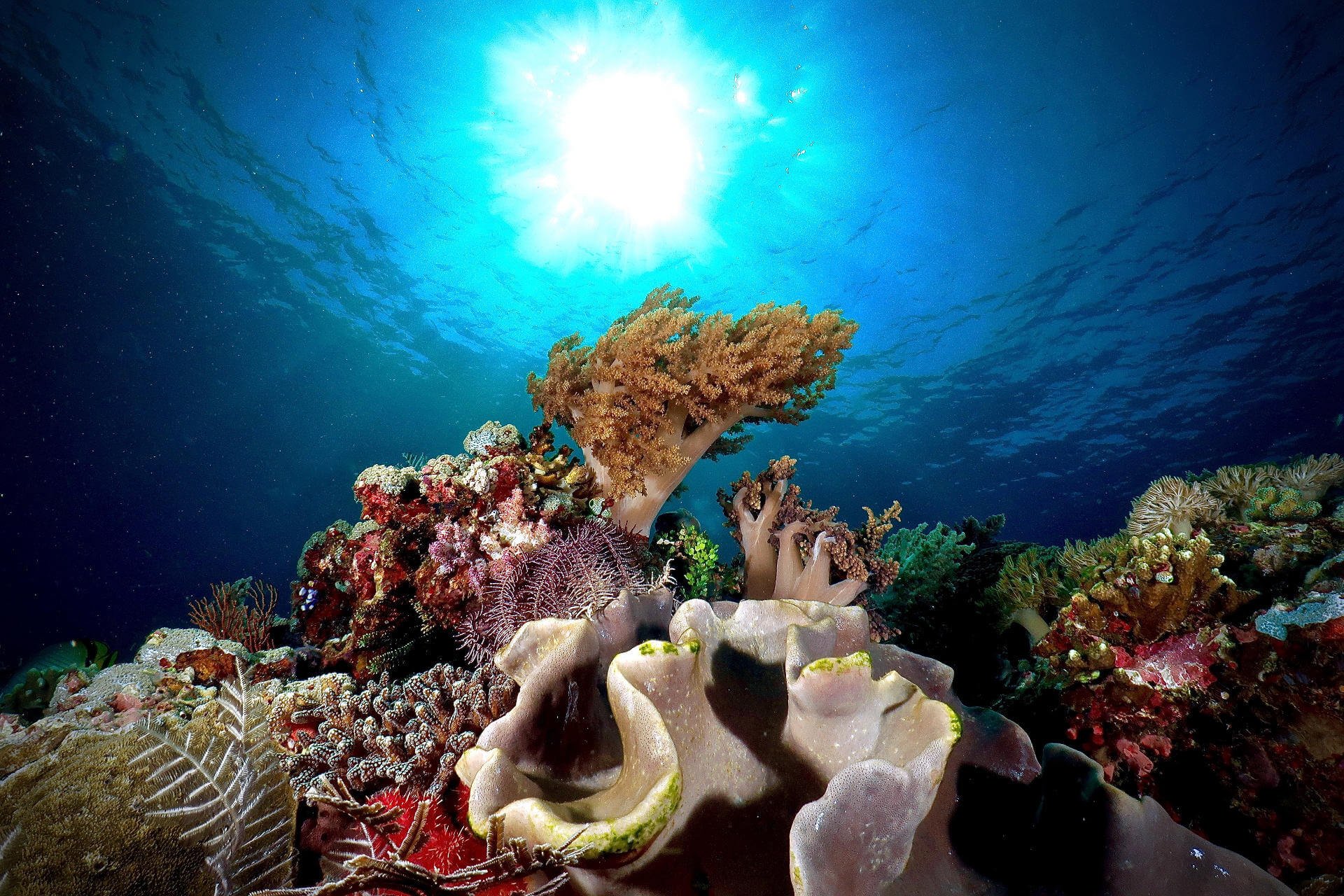 Above the sea level Batu Bolong (hollow rock) is just a small rock between Tatawa Besar and Komodo, underwater it a big conic massive rock and one of the most amazing dive sites of the Komodo archipelago. Although the currents can be very strong, diving is always possible in the shade of the rock, which is either the Northern or the Southern side, depending on the direction of the current. It is highly recommended to follow the dive master, as on the East and West corners there can be strong downwelling currents. The southern side of batu Bolong gradually slopes, while the northern side is more rugged, with a wall, pinnacles and reefs. The dive starts close to the rock, on a 5-6 m deep coral garden, and then goes down to 28-30 m. The coral garden on the top hosts an impressive amount of invertebrates and thousands of colourful reef fish. Big fish, as sharks, napoleon wrasses, giant trevallies, big emperors and schools of fusiliers and surgeon fishes swim close to the steep walls.
Above the sea level Batu Bolong (hollow rock) is just a small rock between Tatawa Besar and Komodo, underwater it a big conic massive rock and one of the most amazing dive sites of the Komodo archipelago. Although the currents can be very strong, diving is always possible in the shade of the rock, which is either the Northern or the Southern side, depending on the direction of the current. It is highly recommended to follow the dive master, as on the East and West corners there can be strong downwelling currents. The southern side of batu Bolong gradually slopes, while the northern side is more rugged, with a wall, pinnacles and reefs. The dive starts close to the rock, on a 5-6 m deep coral garden, and then goes down to 28-30 m. The coral garden on the top hosts an impressive amount of invertebrates and thousands of colourful reef fish. Big fish, as sharks, napoleon wrasses, giant trevallies, big emperors and schools of fusiliers and surgeon fishes swim close to the steep walls.
Although the shallow water coral garden is relatively small, the site is interesting for snorkelers with a good chance to spot big fishes.
Visibility: good to excellent all year round.
Distance: 30 min by boat from Sebayur; 1h30 min from Labuan Bajo.
Castle Rock
 At Castle rock the current can be very strong. It’s a dive site for very experienced divers with strong current conditions. Several pinnacles rising from a platform 20-24 metres deep and reaching almost the surface up to 4 meters deep, offer an unforgettable view. Among the pinnacles huge schools of fusiliers and surgeon fish attract Giant and Jack trevallies, Spanish mackerels and sometimes dolphins. White tip and black tip sharks patrol the area, which is often visited by eagle and manta rays. Most of the divers want to come back here again and again... The visibility is excellent.
At Castle rock the current can be very strong. It’s a dive site for very experienced divers with strong current conditions. Several pinnacles rising from a platform 20-24 metres deep and reaching almost the surface up to 4 meters deep, offer an unforgettable view. Among the pinnacles huge schools of fusiliers and surgeon fish attract Giant and Jack trevallies, Spanish mackerels and sometimes dolphins. White tip and black tip sharks patrol the area, which is often visited by eagle and manta rays. Most of the divers want to come back here again and again... The visibility is excellent.
In current conditions the dive entry point is in the blue at about 50-60 meters West-Southwest from the shallowest pinnacles. Then you dive down to 30-33 meters on the slope and start to go up to the platform at about 24 meters. After having explored the platform, where the action is, you will go up right in between the main pinnacles to have you safety stop at 5 meters.
Crystal Rock
 At about 300 meters from Castle rock is Crystal rock, of which the tip is exposed at low tide. Similarly to Castle Rock, the current at Crystal rock can be very strong. Though you’ll better sheltered in the shade of the big rock. Besides the same fish population as on Castle rock, there is a beautiful coral garden with lots of fan corals on the Southwest side. If there’s no current, we suggest to start the dive at 22-24m on the saddle connecting the main rock to a big pinnacle covered by fan corals. From there you can dive down to 27-30m and look for pygmy sea horses on the fan corals. After having swum around a smaller pinnacle at about 22 meters, you will head to the main rock on its western side. From here we will go up, reach the main rock eastern side and make a safety stop at about 12 meters from the surface.
At about 300 meters from Castle rock is Crystal rock, of which the tip is exposed at low tide. Similarly to Castle Rock, the current at Crystal rock can be very strong. Though you’ll better sheltered in the shade of the big rock. Besides the same fish population as on Castle rock, there is a beautiful coral garden with lots of fan corals on the Southwest side. If there’s no current, we suggest to start the dive at 22-24m on the saddle connecting the main rock to a big pinnacle covered by fan corals. From there you can dive down to 27-30m and look for pygmy sea horses on the fan corals. After having swum around a smaller pinnacle at about 22 meters, you will head to the main rock on its western side. From here we will go up, reach the main rock eastern side and make a safety stop at about 12 meters from the surface.
Position: northwestern tip of Komodo Island; Distance: 1h 15min by boat from Komodo Resort
Distance: 2h 20min from Labuan Bajo
The Cauldron
 Usually a drift dive along the channel between Gili Lawa Laut and Gili Lawa Darat. With high tide we start from the south-eastern side of the channel and we cross swimming among corals and schools of fish. On the other side of the channel we will drift to the edge of the cauldron. Once we’ve entered the cauldron we dive down to the bottom watching the wall covered with corals and crinoids. Inside the cauldron you will enjoy the amazing view of sharks and big pelagic fish whirling around. We then go up along the northern side of the wall, we drift a bit longer to end our dive behind the western tip of Gili Lawat Laut where our boat is waiting.
Usually a drift dive along the channel between Gili Lawa Laut and Gili Lawa Darat. With high tide we start from the south-eastern side of the channel and we cross swimming among corals and schools of fish. On the other side of the channel we will drift to the edge of the cauldron. Once we’ve entered the cauldron we dive down to the bottom watching the wall covered with corals and crinoids. Inside the cauldron you will enjoy the amazing view of sharks and big pelagic fish whirling around. We then go up along the northern side of the wall, we drift a bit longer to end our dive behind the western tip of Gili Lawat Laut where our boat is waiting.
Great snorkelling, but only suitable for expert swimmers, because of the strong currents
Position: a few hundred meters from Crystal Rock at the north-western tip of Komodo island
Distance: 1h 20min from Komodo Resort; 2h 25min from Labuan Bajo
Toko Toko
 This is the most northern dive site of Komodo National Park. It’s a small rock island just in the middle of the sea exposed to currents that can be very strong. Definitely a dive site for experienced divers, which must be carefully checked before diving. Like any other drift dive it allows you to meet big pelagic fish, sharks, sometimes mantas, and any other natural inhabitant of the sea. You can dive 40 meters deep. Just follow the current. Any direction is ok. When you need to do your safety stop swim back close to the shallow waters of the island and enjoy the reef. The west side of Toko Toko Island has a sort of long finger extension towards the west with very interesting and particular marine life. That’s why we recommend a drift dive from east to west.
This is the most northern dive site of Komodo National Park. It’s a small rock island just in the middle of the sea exposed to currents that can be very strong. Definitely a dive site for experienced divers, which must be carefully checked before diving. Like any other drift dive it allows you to meet big pelagic fish, sharks, sometimes mantas, and any other natural inhabitant of the sea. You can dive 40 meters deep. Just follow the current. Any direction is ok. When you need to do your safety stop swim back close to the shallow waters of the island and enjoy the reef. The west side of Toko Toko Island has a sort of long finger extension towards the west with very interesting and particular marine life. That’s why we recommend a drift dive from east to west.Golden Passage
 This dive site is the channel that separates Gili Lawa Darat from Komodo Island. It’s a surprising drift dive better to be done in rising tide when the current pushes east to west. Get into the water in the shallow eastern bay and follow the current. The coral garden is beautiful and the deeper you get the more life you’ll find there waiting for you. You will cross the channel about 20 meters deep surrounded by amazing always changing landscapes and fish. Schools of sweet lips, trevally, reefs white and black tip sharks. Lots of turtles. Sometimes giant manta rays and dolphins. The dive ends at the opposite side of the channel where divers can enjoy the bright corals during their safety stop. The dive is still very nice when the tide is going out and the site is very suitable for snorkelers, especially in the shallow waters of the bays.
This dive site is the channel that separates Gili Lawa Darat from Komodo Island. It’s a surprising drift dive better to be done in rising tide when the current pushes east to west. Get into the water in the shallow eastern bay and follow the current. The coral garden is beautiful and the deeper you get the more life you’ll find there waiting for you. You will cross the channel about 20 meters deep surrounded by amazing always changing landscapes and fish. Schools of sweet lips, trevally, reefs white and black tip sharks. Lots of turtles. Sometimes giant manta rays and dolphins. The dive ends at the opposite side of the channel where divers can enjoy the bright corals during their safety stop. The dive is still very nice when the tide is going out and the site is very suitable for snorkelers, especially in the shallow waters of the bays.Tatawa Besar
 At this site you’ll discover one of the most amazing coral gardens of the Komodo archipelago, well worth more than one dive. This dive site can be an alternative to Tatawa Kecil when the current is too strong. In this condition, the dive at Tatawa besar becomes a fun drift over a colourful underwater landscape for hundreds of meters.
At this site you’ll discover one of the most amazing coral gardens of the Komodo archipelago, well worth more than one dive. This dive site can be an alternative to Tatawa Kecil when the current is too strong. In this condition, the dive at Tatawa besar becomes a fun drift over a colourful underwater landscape for hundreds of meters.
The dive entry is at about 6 meters depth, in front of a small beach facing the open sea at the northern side of the Island. You start getting down heading North-east and then you follow the reef in East-Southeast direction at about 25 meters depth. This site is an unforgettable place for macro-photographers, as invertebrate species are the most interesting here. However, you will easily spot napoleon wrasses, sea turtles and black tip fin sharks. Usually in no current conditions you will return to the starting point, while with strong currents the boat will be waiting in the bay at the southern side of the island.
Visibility is good or excellent, except in January and February because the west monsoon can hit the coast very violently.
Great place for snorkelling
Distance: 20 min by boat from Sebayur; 1h 30 min from Labuan Bajo
Tatawa Kecil
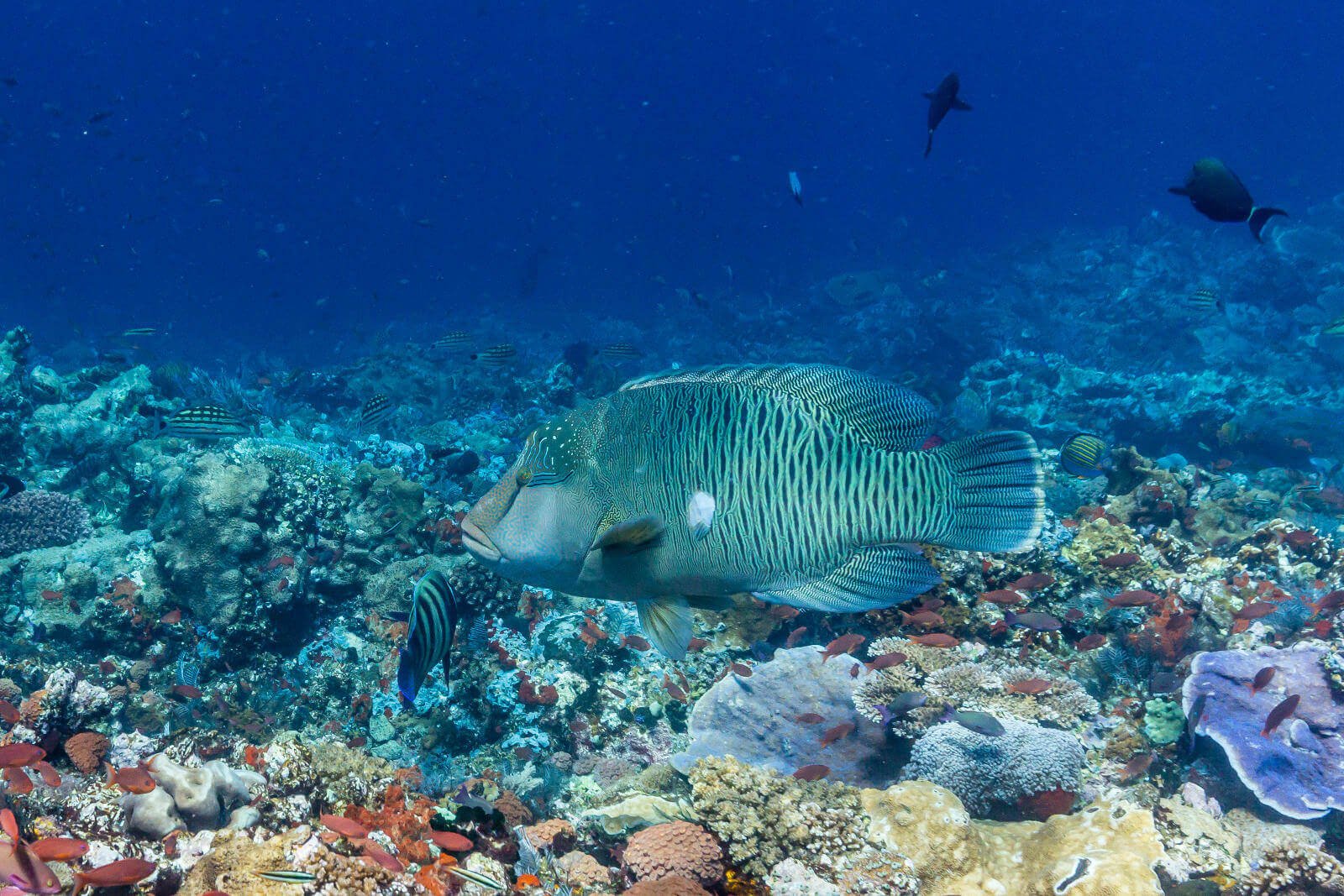
A fantastic dive site where currents can be awful. Located Northeast of Komodo, not far from Batu Bolong and South of Tatawa Besar, Tatawa Kecil is populated by an impressive variety of species. In the southern area at about 24 meters depth a small cave hosts a colony of pygmy seahorses. White tip sharks, grey sharks, giant trevallies and tuna fish are commonly seen here. In the northern side, at about 22 meter depth, two big rocks give shelter to a cleaning station, mostly used by sweetlips. In no or weak current conditions, it is nice to have the safety stop in the northern side, while surrounded by surgeon fish, big unicorn fishes and trevally.
Everybody can dive here during the tide change in the half moon periods, when the currents are weak. In all the other periods the extremely strong currents make this site suitable only for very experienced divers.
Visibility usually excellent.
Wonderful snorkeling
Distance: 25 min by boat from Sebayur / 1 h 35 min from Labua Bajo
Makasser Reef (Manta Point)
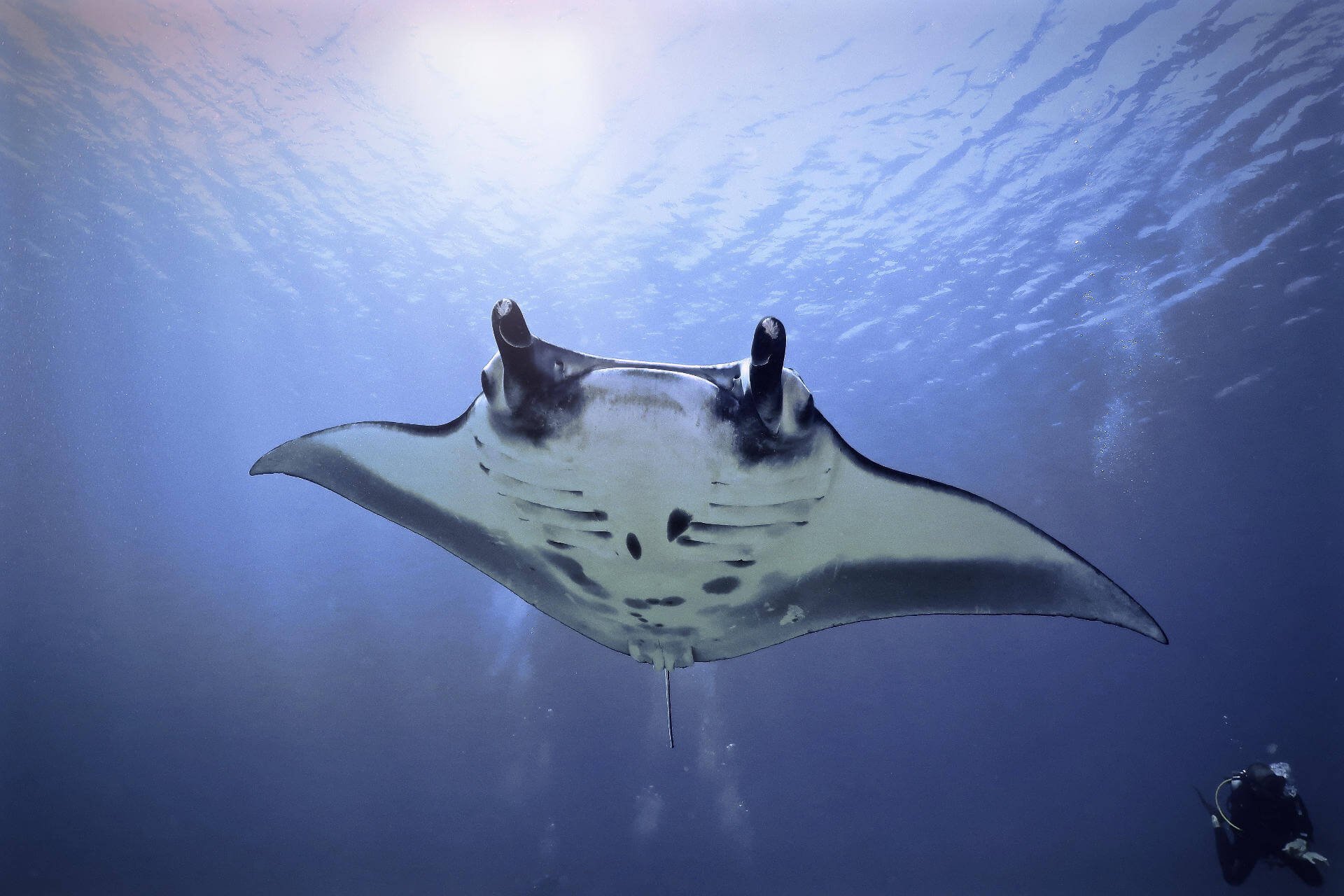 Northeast of Komodo Island, near Batu Bolong and the two Tatawa, is Karang Makassar, a reef in the middle of the Lintah Strait and its currents. The reef at 5 - 15 m depth resembles a lunar landscape with very little living coral, lots of coral debris and some large pebbles on the ground. This description is not very appealing for what is actually one of the most interesting places in the Komodo Archipelago.
Northeast of Komodo Island, near Batu Bolong and the two Tatawa, is Karang Makassar, a reef in the middle of the Lintah Strait and its currents. The reef at 5 - 15 m depth resembles a lunar landscape with very little living coral, lots of coral debris and some large pebbles on the ground. This description is not very appealing for what is actually one of the most interesting places in the Komodo Archipelago.
In fact, it is just that mantas always come here. To find food maybe? To be cleaned? Or just to play? Why they come here is not clear, but this is definitely the place to go to spot them. It is possible to see them anytime here, although it is easier to see them at high tide and with strong current conditions.
We start diving down to 8-10m a few hundred meters east from a little green Island that marks the southern end of Manta Point. We drift with the current at a short distance from the bottom not deeper than 15 m.
With high tide, although the current is strong the dive is not difficult. For inexperienced divers it is a perfect start for drift diving. In this strange place, that looks sparsely populated at first glance, you can actually meet sea turtles, white or black tip sharks and huge trevallies. Bamboo sharks, rather uncommon in this area, have recently been seen here.
Visibility is generally good, except during the rainy season (January-February) Excellent Snorkelling with the same probability to see the mantas.
distance: 45 min south west from the Komodo Resort
Sebayur Central
 Starting from the mooring, we head westward on the sandy bottom inhabited by a colony of garden eels. Sloping down towards the west, we will find at 25 meters depth some rocks covered with corals and visited by many fish. Swimming towards the west along the slope on our right side, we reach a point where the slope becomes steeper and forms a wall covered by gorgonians, crinoids, sponges. Here we can easily find colourful flat worms, nudibranches, crocodile fish, groupers, lobsters, spotted stingrays and medium size tridacna clams. Sometimes an eagle ray or a shark passes by. We make our safety stop on the coral garden in front of the rocky side of Sebayur.
Starting from the mooring, we head westward on the sandy bottom inhabited by a colony of garden eels. Sloping down towards the west, we will find at 25 meters depth some rocks covered with corals and visited by many fish. Swimming towards the west along the slope on our right side, we reach a point where the slope becomes steeper and forms a wall covered by gorgonians, crinoids, sponges. Here we can easily find colourful flat worms, nudibranches, crocodile fish, groupers, lobsters, spotted stingrays and medium size tridacna clams. Sometimes an eagle ray or a shark passes by. We make our safety stop on the coral garden in front of the rocky side of Sebayur.
Snorkeling: beautiful all around Sebayur Kecil
Distance: 5 min from Sebayur Besar (Komodo Resort); 1h 15 min from Labuan Bajo
Sebayur West
Snorkeling: beautiful all around Sebayur Kecil
Distance: 10 min from Sebayur Besar (Komodo Resort); 1h 20 min from Labuan Bajo
Mawan
This dive is suitable for experienced divers but not during the moon changes because of the strong currents. Approach this site during rising tide only and you will discover one of the richest spots of Lintah Strait. In front of the southern beach you enter the water around the west edge and just follow the slope southwards. You will meet big fish and have a good chance to spot some mantas and macro critters as well. Indulge yourself here as long as you can at a depth of 12 to 18 meters, then swim back towards the beach for the safety stop. You will be surprised by the number of different species you can spot here on one single dive. The peculiarity of the Komodo waters is the amazing biodiversity.
Siaba Besar
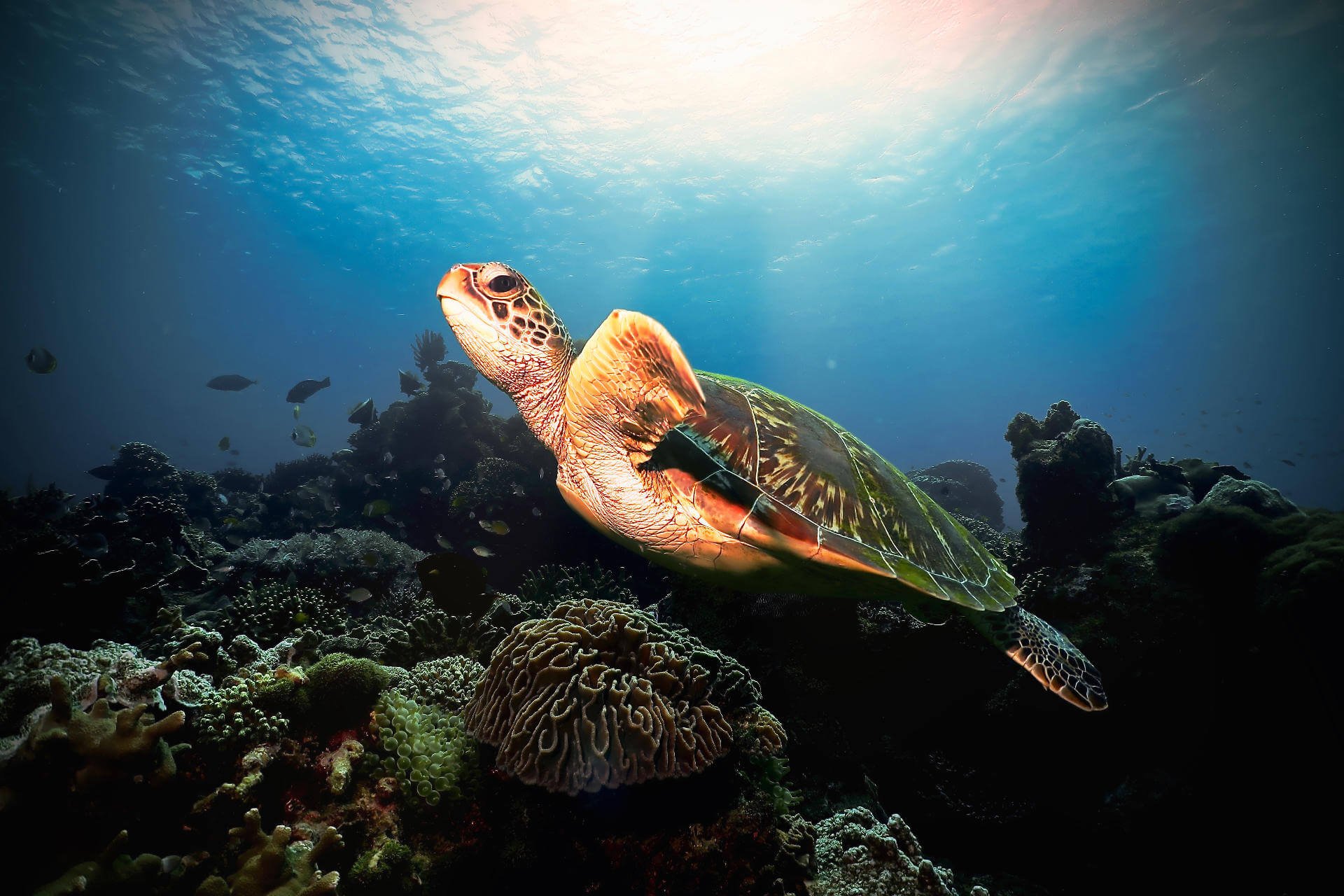 Siaba Besar (30 minuts from resort)
Siaba Besar (30 minuts from resort)
Siaba Besar is another amazing dive of north Komodo. The beautiful coral garden lies along the western coast of the island and the site can be dived both during rising and falling tide, though falling tide, with currents pushing southwards, is the best. In falling tide enter the water at the north western tip of Siaba Besar and just follow the current to a depth of 18 to 25 meters. As in any other spot where currents run large schools of pelagic are hunting here around. Black tip sharks, barracudas, snappers, trevally, wrasses and turtles are usually spotted on this dive. The more southwards you go, the stronger the current gets, but it never gets too strong. The dive naturally ends at the southern edge of the island where a colourful coral garden will receive you for your safety stop that normally lasts much more than 3 minutes.
Siaba Kecil
 Siaba Kecil Drift (30 minutes from resort)
Siaba Kecil Drift (30 minutes from resort)
Siaba Kecil is a drift dive running through amazing canyons that lie 15 to 30 m deep. Ending point is always around a beautiful coral garden. Current here can be strong and the drift a real adventure for average experienced divers, but beginners can enjoy the area too by just hanging around the gardens and avoiding the flying drift. Depending on the currents divers can dive the site starting from the east or west cape of the little island and snorkelers can also enjoy the site if the current is not too strong.
The canyons with spectacular caves and cracks host big pelagic fish, sharks, barracudas and schools of giant trevally and sweet lips. Lots of turtles are usually found here. At the end of the drift there are rich coral gardens with lots of life, a real paradise for macro lovers. Many critters live here and the rare mandarin fish can be spotted too. Snorkelers will enjoy this spot as well.
Lonely Tree
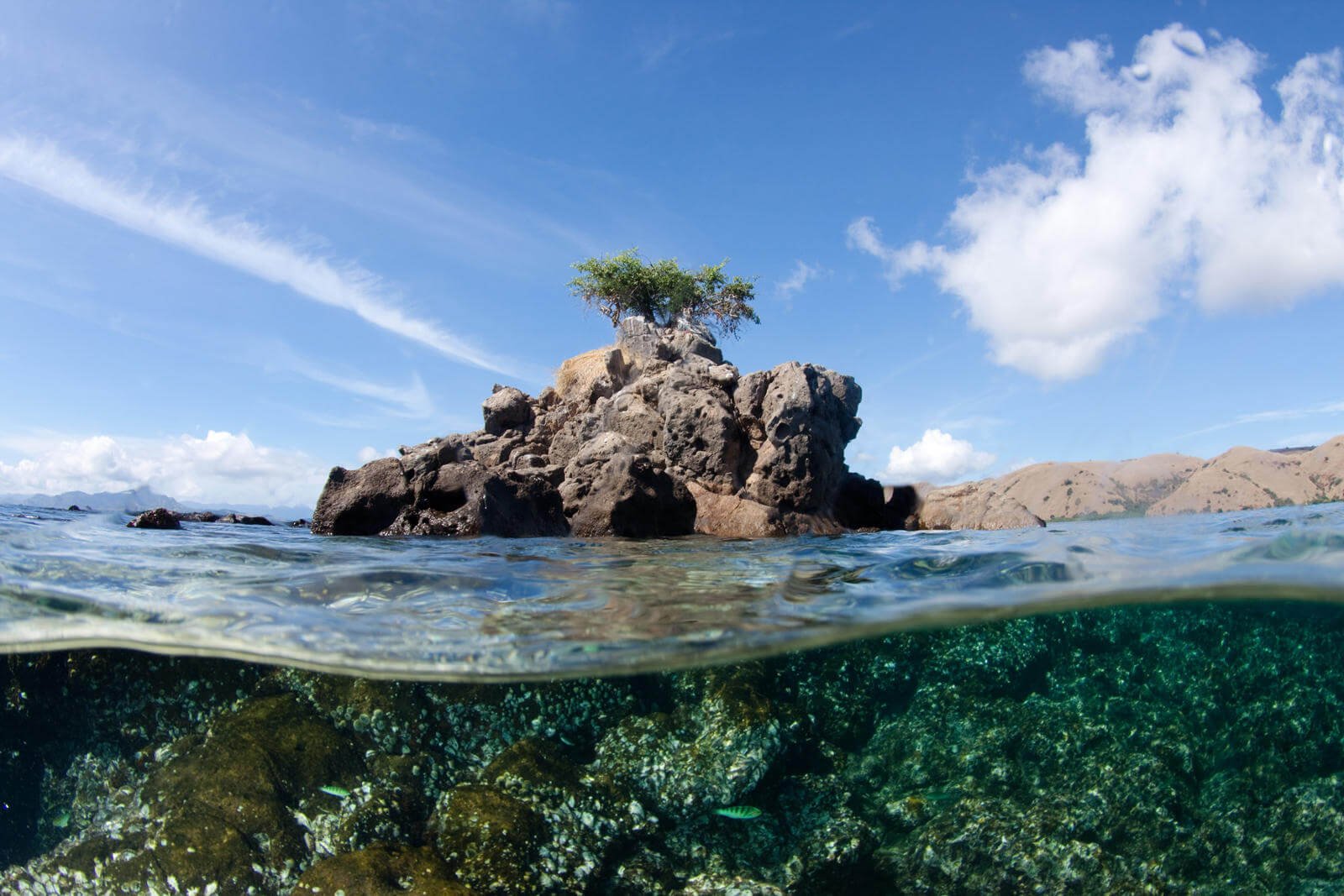 South of Siaba near the coast of Rinca, a little rock with one tree is the landmark of a small Eden for micro-photographers. The dive starts on the eastern side down to 24-25 m, where going east we find a small cave and further on, where the slope becomes less steep, we start going up.
South of Siaba near the coast of Rinca, a little rock with one tree is the landmark of a small Eden for micro-photographers. The dive starts on the eastern side down to 24-25 m, where going east we find a small cave and further on, where the slope becomes less steep, we start going up.
The slope is covered by small colourful coral formations inhabited by nudibranches and flatworms Pseudoceros. As the currents can be very strong it is recommended to dive here during the inter-tidal periods, preferably around half-moon, when the currents are not so strong and the inter-tidal period is longer.
Distance 40 min south-southwest of the Komodo Resort
Vainilu
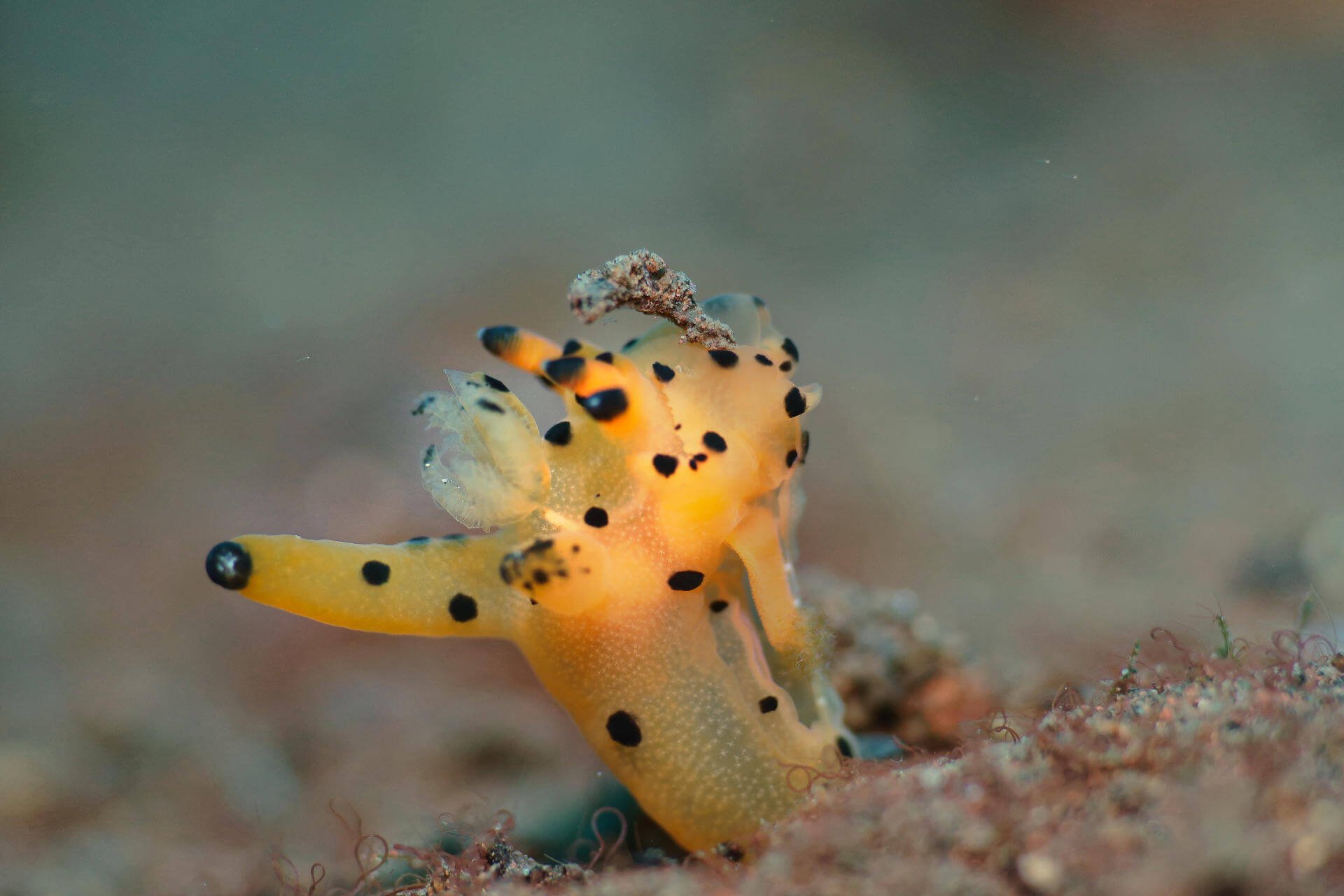 Vainilu (1 hour from the resort)
Vainilu (1 hour from the resort)
Vainilu, just at the exit of Loh Buaya bay, offers something different compared to the other dive sites in Komodo .
Enter the water just in front of the beach at the west side of the bay.
You will be surprised about the absence of corals and colours. Just a sandy slope, coral debris and rubble.
You may think you missed the spot but no, that’s the place, the best muck dive-site of Komodo.
Explore carefully the bottom at 8 to 15 meters, you will find a collection of critters that no other sites in Komodo can offer.
This is a real paradise for macro-photographers.
Frog fish, sea horses, all kinds of species of pipe fish, dragonets, mandarin fish and so on.
Vainilu is a strange and different dive site but not to be missed if you think that “small is nice”.
Pulau Tengah
You always dive in the part under the current very close to the coast and go down to some thirty meters and then go back to zig zag always avoiding the exposure to the currents on the east and west corners. The wall is covered with ascidians (sea squirts) and a number of different species of soft and hard corals that house a large variety of nudibranchs and flatworms. Almost certainly you’ll meet with some turtles, big Napoleon wrasses, trevallies and white tip sharks. Visibility is generally good except for some periods of the year when the water tends to be cloudy.
Very nice snorkelling even if it is on a small area.
Distances: from Sebayur Besar 25 min southbound on the route to Loh Buaia (Rinca) from Labuan Bajo 1h 30min southwest

Welcome aboard the Cheng Ho, one of the traditional Bugis Phinisi schooners within the fleat of Sea Safaries. Your diving experience starts and ends in Labuan Bajo and will bring you to magnificient diving spots in the National marine park Komodo. Of course, we will visit one of the islands, Rinca, ... meer infomore infoinformations supplémentaires
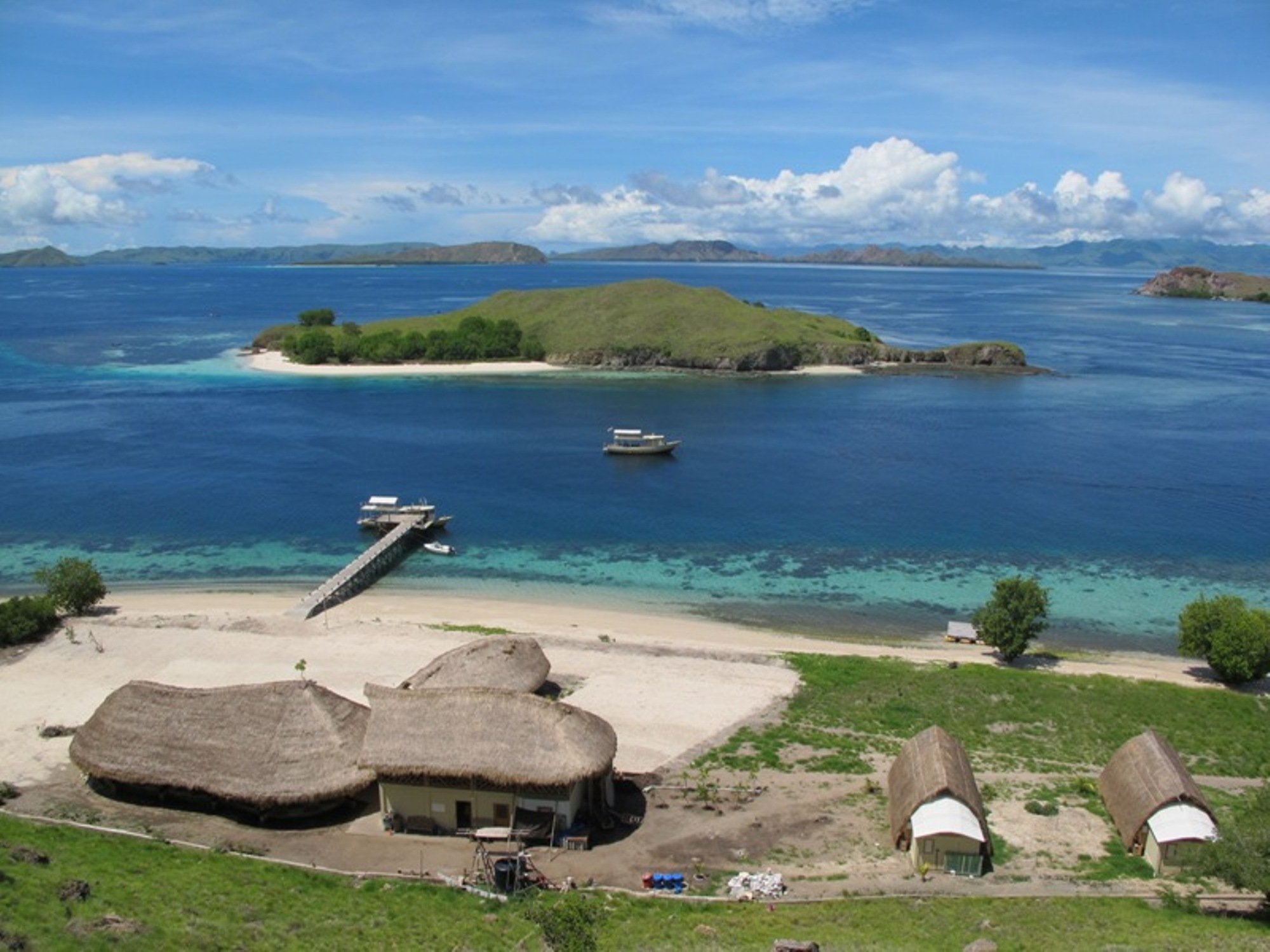
The Komodo resort & Diving club is strategically located in the Komodo Marine park on the island of Sebayur besar, in central Komodo. From the resort you can reach dozens of dive spots within half an hour of sailing.
The resort also offers excursions to the Komodo dragons at Rinca and Komodo.
... meer infomore infoinformations supplémentaires

The crew of the Moana welcomes you aboard this beautiful sailing ship. On this unforgettable cruise, specially designed for divers, you will experience an unimaginably beautiful journey. You can dive 4 times a day at beautiful locations!
MOANA is a custom built Indonesian Liveaboard Ship. She is
... meer infomore infoinformations supplémentaires







The Komodo National Park is a UNESCO World Heritage site that consists of 3 larger islands Komodo, Rinca, and Padar, and over 20 smaller ones, many of which are uninhabited. Komodo and Rinca are home to the legendary Komodo dragons, respected by locals who believe they descend from one born to a dra ... meer infomore infoinformations supplémentaires





Besides the unique Komodo dragons and the rugged landscape, the national park is also known as one of the best dive locations in the world. It is a UNESCO world heritage, situated between Sumbawa and Flores and consists of 3 larger islands: Komodo, Rinca and Padar, as well as numerous smaller ones. ... meer infomore infoinformations supplémentaires

On and from this beautiful liveaboard you will sail and dive into the waters of the Komodo National park. Departure and arrival place is Labuan Bajo, West Flores.
Let yourself be pampered by the crew and amazed by the beautiful sea gardens. You also visit the island of Rinca. During a trekking ac
... meer infomore infoinformations supplémentaires




